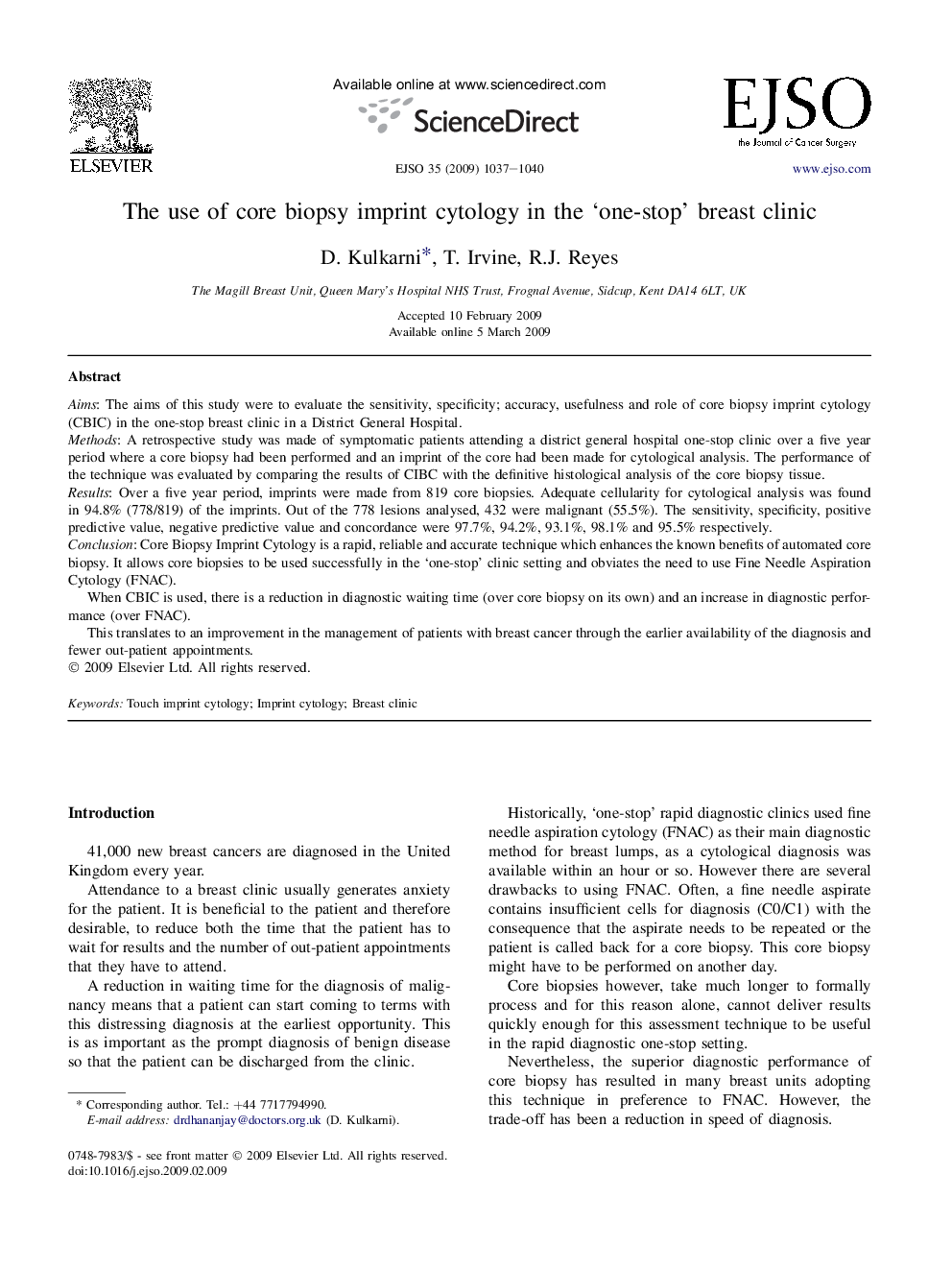| Article ID | Journal | Published Year | Pages | File Type |
|---|---|---|---|---|
| 3987432 | European Journal of Surgical Oncology (EJSO) | 2009 | 4 Pages |
AimsThe aims of this study were to evaluate the sensitivity, specificity; accuracy, usefulness and role of core biopsy imprint cytology (CBIC) in the one-stop breast clinic in a District General Hospital.MethodsA retrospective study was made of symptomatic patients attending a district general hospital one-stop clinic over a five year period where a core biopsy had been performed and an imprint of the core had been made for cytological analysis. The performance of the technique was evaluated by comparing the results of CIBC with the definitive histological analysis of the core biopsy tissue.ResultsOver a five year period, imprints were made from 819 core biopsies. Adequate cellularity for cytological analysis was found in 94.8% (778/819) of the imprints. Out of the 778 lesions analysed, 432 were malignant (55.5%). The sensitivity, specificity, positive predictive value, negative predictive value and concordance were 97.7%, 94.2%, 93.1%, 98.1% and 95.5% respectively.ConclusionCore Biopsy Imprint Cytology is a rapid, reliable and accurate technique which enhances the known benefits of automated core biopsy. It allows core biopsies to be used successfully in the ‘one-stop’ clinic setting and obviates the need to use Fine Needle Aspiration Cytology (FNAC).When CBIC is used, there is a reduction in diagnostic waiting time (over core biopsy on its own) and an increase in diagnostic performance (over FNAC).This translates to an improvement in the management of patients with breast cancer through the earlier availability of the diagnosis and fewer out-patient appointments.
